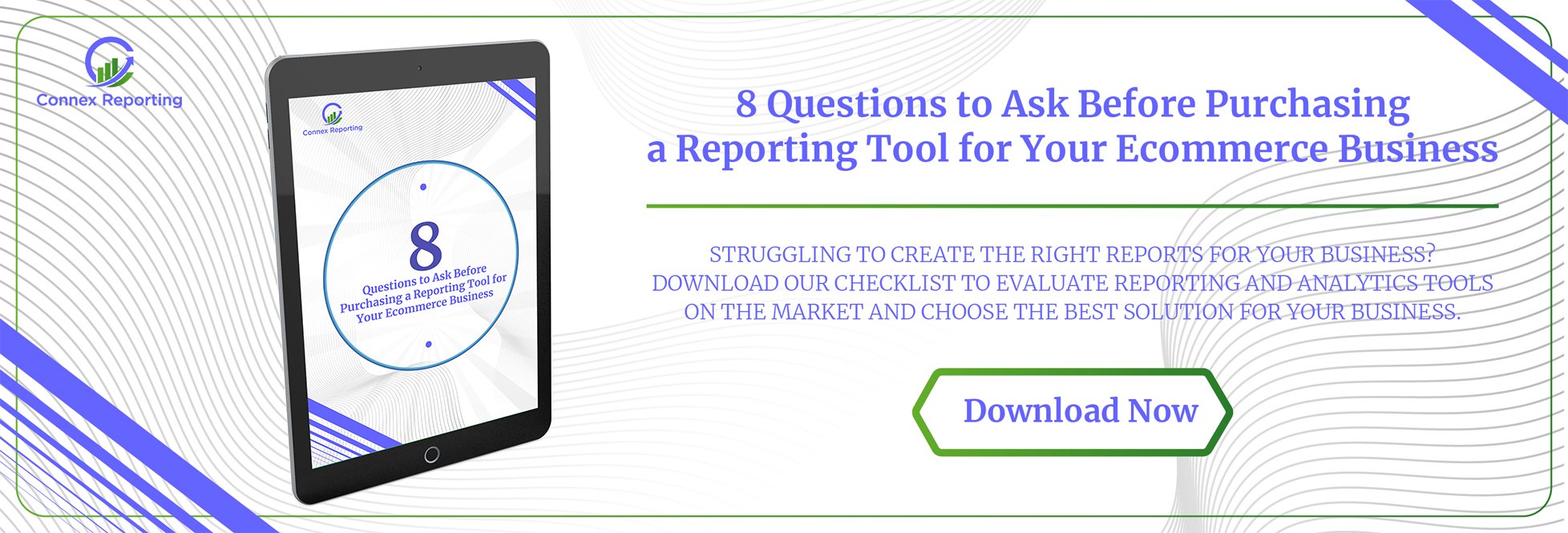In today's digital age, e-commerce businesses have become increasingly popular, offering consumers the convenience of shopping from the comfort of their homes. However, with the rise of online shopping comes the challenge of handling customer returns and refunds.
While returns are a common part of the retail industry, they can be particularly challenging for e-commerce businesses due to the lack of face-to-face customer interaction.
In this context, e-commerce businesses must provide a seamless customer experience regarding returns and refunds to maintain customer satisfaction and loyalty.
What Is a Return on eCommerce?
A return in e-commerce refers to a customer returning a product they purchased from an online store or e-commerce business.
Customers may choose to return a product for various reasons, such as receiving a defective or damaged item, receiving the wrong item, or simply changing their minds about their purchase.
Online retailers and e-commerce businesses need a well-defined returns process to handle these situations effectively.
Additionally, customers expect a convenient and hassle-free returns process, and e-commerce businesses must be able to meet these expectations to maintain customer loyalty and satisfaction.
A well-managed returns process is essential for any e-commerce business. Businesses can build customer loyalty and ensure long-term success by providing a convenient and transparent process for customers to return items and implementing measures to prevent fraud.
Understanding the Laws Governing Returns.
When it comes to e-commerce returns, there are several laws and regulations in place that businesses must follow to ensure fair and transparent return processes for their customers.
One important aspect of these laws is the requirement for businesses to clearly state their return policies and any limitations or restrictions on returns.
For example, businesses must disclose whether they offer store credit or refunds and whether they provide free return shipping.
These policies can significantly impact customer satisfaction and loyalty, so businesses need to be transparent about their return policies and make them easy to understand for customers.
By being transparent about their return policies, offering free return shipping, and prioritizing customer satisfaction, businesses can build customer loyalty and thrive in the e-commerce industry.
Best Practices for Your ECommerce Returns and Refunds
Have a Clear Return Policy.
One of the most important best practices for e-commerce returns and refunds is to have a clear and easy-to-understand return policy.
Customers should be able to quickly and easily find information on your return policy, including any restrictions or limitations on returns. This can help set customer expectations and prevent confusion or frustration during returns.
Offer Free Returns and Return Shipping.
Another best practice is to offer free returns and return shipping. While this may seem like a costly investment, it can help improve customer satisfaction and loyalty.
Customers are more likely to shop with online retailers who offer free returns, and they may even be willing to spend more on their initial purchase, knowing that they can easily return the item if needed.
Streamlined and Efficient Returns Process
This can include providing customers with clear instructions on how to initiate a return and tracking tools to help customers monitor the progress of their return.
The more convenient and hassle-free the returns process, the more likely customers will continue shopping with your e-commerce business.
It's also important to prioritize customer satisfaction throughout the returns and refund process. This can include providing timely and accurate refunds and offering personalized support and assistance to customers who encounter issues with their returns.
Why Do People Return Purchased Items?
When returning multiple items, customers may encounter various challenges that can impact their experience with a business. For instance, some customers may be serial returners who frequently return products for various reasons.
Others may be dissatisfied with the quality or functionality of the product and wish to return multiple items at once.
To accommodate such customers, businesses need different systems that allow for efficient returns processing. This may include different product return options, such as in-store, mail-in, or drop-off returns.
Additionally, businesses may categorize their products based on the type of return they may require. For example, clothing may have a different return process than electronics or home goods.
The impact of returns on customer loyalty
While returns are a natural part of the retail industry, they can be particularly challenging for online stores due to the lack of face-to-face customer interaction. Here are some ways in which returns can impact customer loyalty:
Return Process
If the return process is complicated or time-consuming, customers may be less likely to shop with the company in the future. On the other hand, if the process is easy and hassle-free, customers are more likely to view the company favorably and may be more likely to make future purchases.
Customer Satisfaction
Customers dissatisfied with their purchase may be more likely to return the product and less likely to shop with the company.
However, if the process is handled well, customers may be more forgiving and positively view the company, leading to increased loyalty and repeat business.
The return process, cost, and convenience affect how customers perceive the company and whether they will likely shop with the company in the future.
Therefore, online businesses must prioritize an easy, hassle-free return process to maintain customer satisfaction and loyalty.
Easy eCommerce Returns Are Key to Repeat Sales.
Easy eCommerce returns are essential for businesses looking to increase sales and reduce returns, particularly during the holiday season when sales volume is high.
In fact, according to a survey by the Freight Waves, 91% of consumers said that the ease of making returns is an important factor when making online purchases.
Businesses can instill confidence in their customers and encourage repeat purchases by providing a seamless returns process.
Research by UPS found that 73% of consumers said they are more likely to shop with retailers again if they have an easy returns experience.
Processing returns efficiently is also critical. Returns data can provide valuable insights into customer behavior and help businesses identify patterns and areas for improvement.
According to a survey by Invesp, 92% of customers said they would buy something again if the returns process was easy, and 67% of shoppers checked the returns page before making a purchase.
By implementing effective returns systems and processes, businesses can reduce the likelihood of returns and increase customer confidence. This can lead to higher sales and repeat business, ultimately contributing to a stronger bottom line.
Consequences of Not Having the Right Reports on Refunds
According to a recent survey of 500 small businesses, 88% reported difficulties with returns management due to inaccurate reporting.
This can be extremely costly to an eCommerce business and could even lead to the business going out of business if it is not addressed promptly. Below are some factors that are likely to arise:
Loss of Revenue
When businesses cannot track how much money they are losing due to returned products, they may be unable to make informed decisions about their inventory, pricing, or other operations. This can lead to a loss of revenue, which can significantly impact the bottom line.
Inaccurate inventory management
Inaccurate inventory management is another issue that can arise when businesses do not have the right reports on refunds.
Tracking what products are in stock and what is being returned can be challenging without accurate reports. This can result in stock shortages or overstock, impacting sales and profitability.
It can also lead to customer dissatisfaction if customers cannot purchase the products they want due to stock shortages.
Poor Customer Experience
If refunds are not processed efficiently or accurately, it can lead to a poor customer experience. This can negatively impact the reputation of the business and can result in lost customers and revenue.
Customers who are unhappy with their refund experience may be less likely to shop with the business again, which can have long-term consequences for the business.
Identify Patterns and Trends.
The inability to identify patterns and trends is another issue that can arise when businesses do not have the right reports on refunds.
Accurate refund reports can provide valuable insights into patterns and trends, such as which products are frequently returned or why customers are returning items.
This information can help businesses make informed decisions about their products and services and can help them identify areas for improvement.
Without this information, businesses may miss opportunities to improve operations and provide a better customer experience.
Compliance Issues
Finally, not having the right refund reports can lead to compliance issues. If businesses are not properly tracking refunds, they may violate regulations and laws related to returns and refunds. This can result in legal issues and fines, further impacting the bottom line.
Track Your Business Refund with Our Real Time Reporting Tool: Connex.
One of the main features of Connex is its ability to provide detailed reports on refund activity. These reports can help businesses identify patterns in refund requests, such as which products are most commonly returned or which customers are most likely to request refunds.
By analyzing this data, businesses can identify areas where they need to improve product quality or customer service to reduce the number of refunds. Connex Reporting also offers automation features that can help speed up the refund process.
For example, businesses can use the tool to automate the approval of refunds for certain types of returns, such as returns for faulty products. This can help reduce the time customers take to receive their refunds, improving their overall experience with the business.
Another benefit of using Connex is that it integrates with various systems, making it easy to use alongside existing business processes. This means you don't need to invest in a new system to use Connex.
Connex is a valuable tool for businesses looking to improve their refund process and better serve their customers.
By providing detailed reports and automating certain aspects of the refund process, businesses can save time and resources while improving customer satisfaction.




